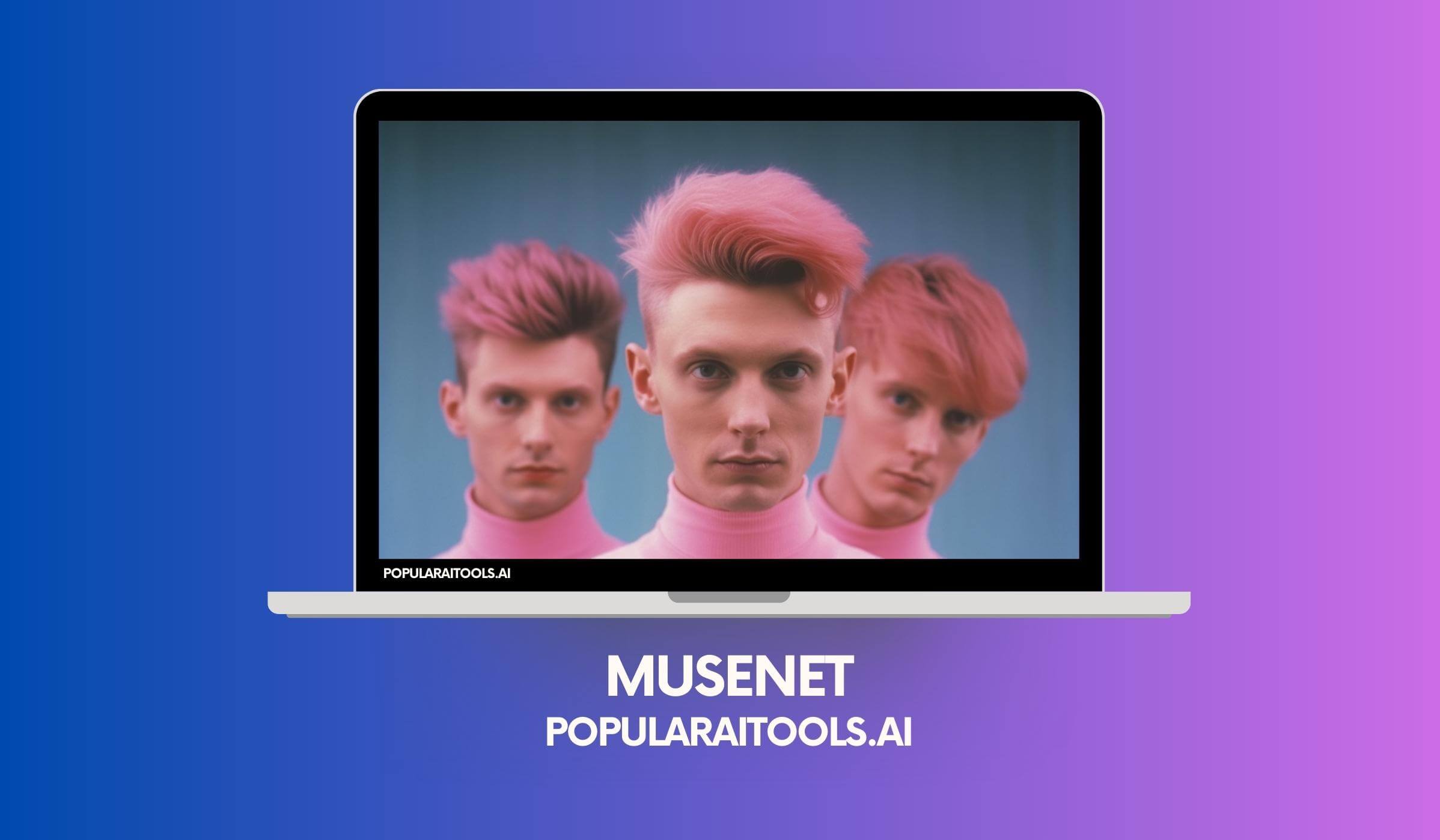
Is Musenet the Mozart of AI Music Generation?
In a world where AI has been making strides in text, image, and even video generation, OpenAI introduces Musenet, a symphony of algorithms that crafts melodies. Imagine the Beatles, Mozart, and country tunes blending harmoniously, all orchestrated by a neural maestro. No, this isn’t a sci-fi fantasy; it’s the reality of AI-driven music composition.
The Inner Workings of Musenet
Musenet is not just another AI tool; it’s a deep neural network designed to generate musical compositions that span up to 4 minutes, incorporating 10 different instruments. What’s fascinating is that Musenet wasn’t explicitly taught the nuances of music. Instead, it learned patterns of harmony, rhythm, and style by predicting the next token in hundreds of thousands of MIDI files. Drawing from the same unsupervised technology as GPT-2, Musenet is a testament to the transformative power of large-scale models in sequence prediction.
Key Features & Benefits: Why Musenet Shines
- Diverse Instrumentation: Musenet can craft compositions with up to 10 different instruments, offering a rich auditory experience.
- Versatile Styles: From the classics like Mozart to modern legends like the Beatles, Musenet can blend a plethora of musical styles.
- Deep Learning Foundations: Built on the foundation of GPT-2, Musenet taps into the power of transformers, ensuring intricate and harmonious outputs.
Real-World Magic: Where Musenet Makes a Difference
Musenet isn’t just a tool for music enthusiasts; it’s a boon for creators, educators, and even businesses. Imagine personalized jingles crafted in minutes, educational tools that teach music theory through AI-generated examples, or even therapeutic melodies tailored to individual preferences. The applications are as vast as the musical universe itself.
Problem Solver: Challenges Musenet Tackles
- Bridging Styles: Ever wondered how Mozart would sound with a touch of country? Musenet can blend diverse musical styles, offering unique compositions.
- Learning without Explicit Programming: Unlike traditional systems, Musenet wasn’t fed rules of music. It learned by predicting patterns, showcasing the power of unsupervised learning.
- Handling Diverse Instruments: Crafting a melody that harmonizes multiple instruments is no easy feat, but Musenet manages this with aplomb.
The Ideal Musenet User
From budding musicians looking for inspiration to seasoned composers seeking a fresh perspective, Musenet caters to a wide audience. Educators can use it as a tool to teach music theory, while businesses can craft unique jingles or background scores. If you have an ear for music and a penchant for innovation, Musenet is your go-to AI maestro.
Three Reasons Musenet is a Game-Changer
- Unsupervised Learning: By leveraging the power of GPT-2, Musenet learns without being explicitly programmed, pushing the boundaries of what AI can achieve in music.
- Diverse Compositions: Musenet’s ability to blend styles and instruments offers a treasure trove of unique compositions.
- Accessible Music Creation: With Musenet, crafting a melody doesn’t require years of training. It’s music creation democratized.
Kickstart Your Journey with Musenet
Ready to embark on a melodious journey with AI? Dive into the world of AI-driven music composition and explore the myriad possibilities with Musenet.
Maximize Musenet: Pro Tips & Tricks
Musenet is more than just a music generator; it’s a tool that, when wielded correctly, can produce masterpieces. Here are some pro tips to get the most out of Musenet:
- Experiment with Styles: Don’t limit yourself to one genre. Musenet’s strength lies in its ability to blend styles. Try combining classical with rock or jazz with pop. The results might surprise you!
- Incorporate Multiple Instruments: Musenet can handle up to 10 instruments. Use this to your advantage to create rich, layered compositions.
- Iterate and Refine: Like any AI tool, Musenet benefits from iteration. Generate a track, listen, tweak the parameters, and generate again. Each iteration can bring you closer to your desired masterpiece.
Conclusion of The Key Benefits
Musenet stands as a testament to the advancements in AI-driven music generation. It’s not just about creating tunes but about understanding and replicating the very essence of music. From its deep learning foundations to its ability to seamlessly meld genres and instruments, Musenet offers a glimpse into the future of music. Whether you’re a professional composer, an educator, or just someone who loves to dabble in tunes, Musenet promises a journey filled with harmonious surprises.
Frequently Asked Questions – FAQ’s
What is Musenet?
Musenet is an advanced AI-driven music generator developed by OpenAI. It’s designed to create compositions across various genres and can even blend styles for unique outputs.
How does Musenet differ from other music generators?
Musenet stands out due to its deep learning foundations. It doesn’t just produce tunes but understands and replicates the essence of music, making it a cut above many other music generators.
Can I use Musenet for professional compositions?
Absolutely! While Musenet is a tool, and the final touch of a human artist is irreplaceable, it can serve as a fantastic starting point or source of inspiration for professional compositions.
How many instruments can Musenet handle?
Musenet can handle up to 10 instruments in a single composition, allowing for rich and layered musical pieces.
Is there a cost associated with using Musenet?
For specific pricing details, it’s best to visit the official Musenet website. They offer various pricing structures to cater to different needs.
Can Musenet blend different musical genres?
Yes, one of Musenet’s strengths is its ability to blend different genres, like combining classical with rock or jazz with pop, producing unique and surprising results.
How do I maximize the output from Musenet?
Experimentation is key. Try different genre combinations, incorporate multiple instruments, and iterate on the generated tracks for best results.
Is Musenet suitable for educational purposes?
Definitely. Musenet can be a valuable tool for educators, especially in music and technology fields, to demonstrate the capabilities of AI in creative domains.
Are there any third-party tools that work well with Musenet?
While Musenet is a standalone tool, its generated compositions can be further refined and edited using various music editing software available in the market.
How does Musenet handle different instruments in a composition?
Musenet has been trained to recognize and incorporate up to 10 instruments in a composition, ensuring each instrument contributes harmoniously to the overall piece.

